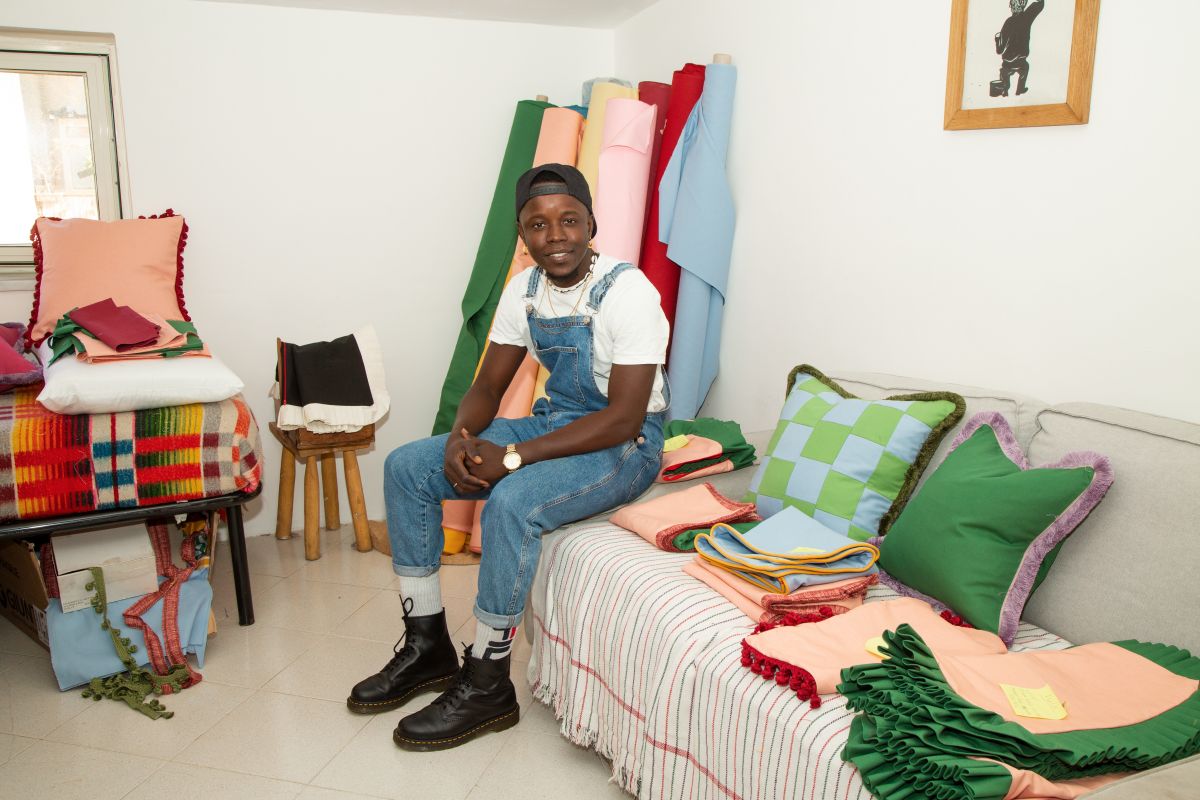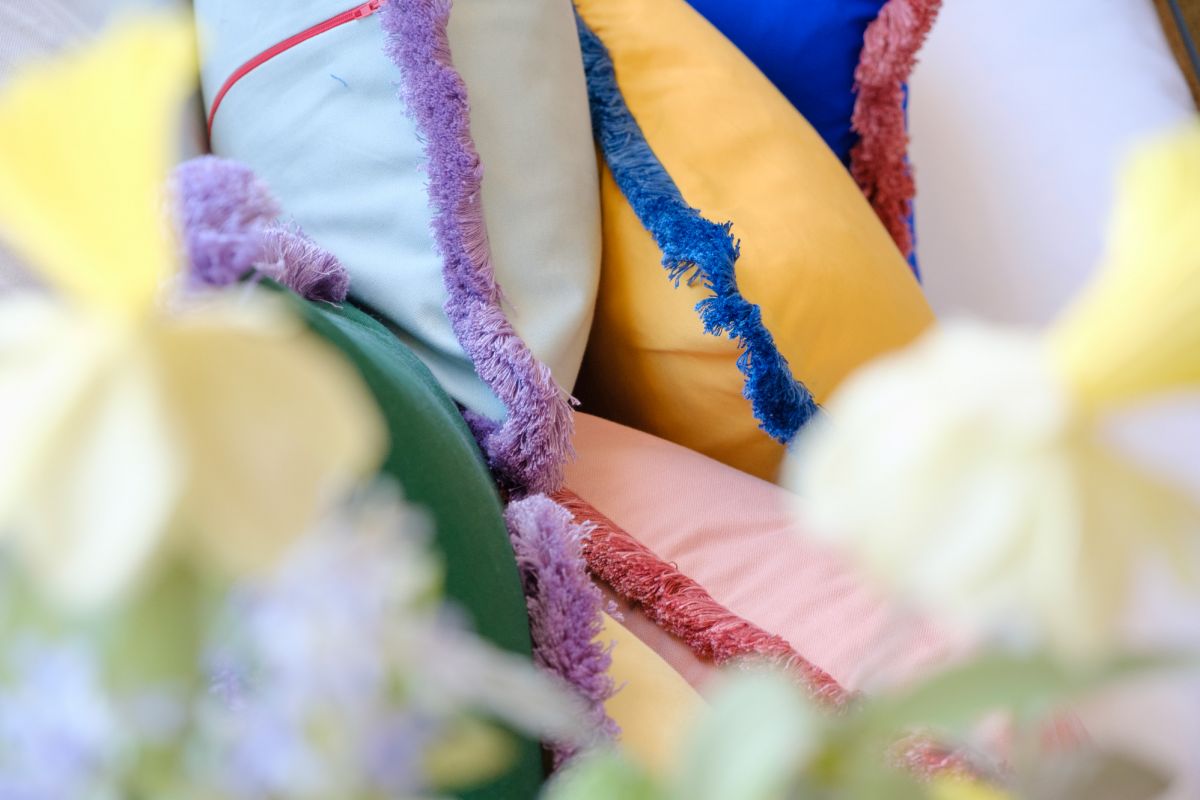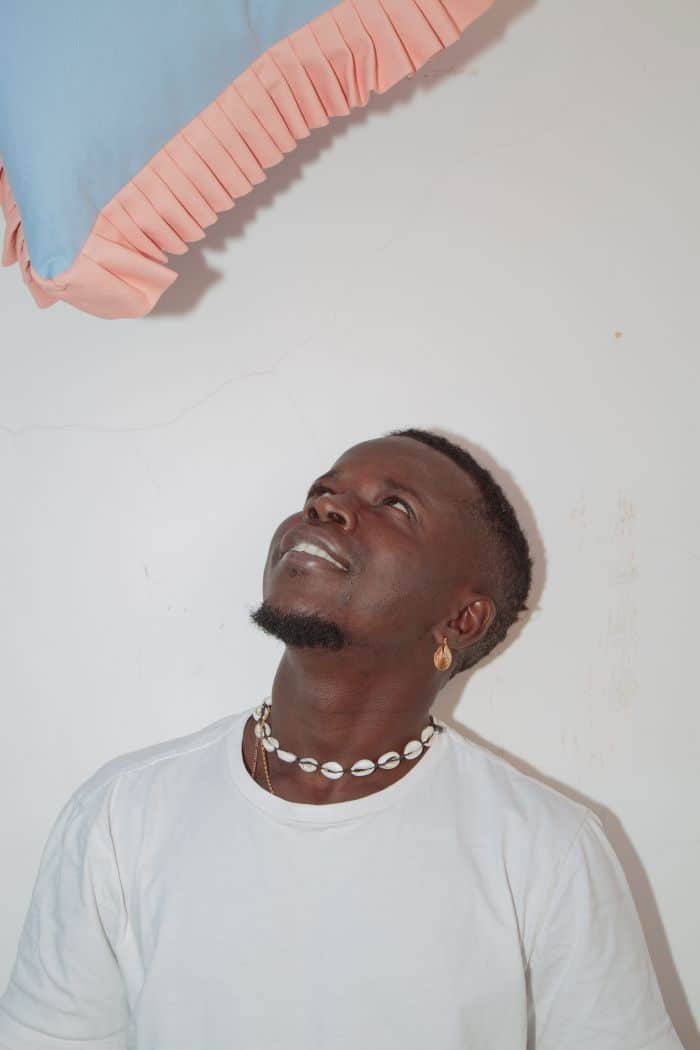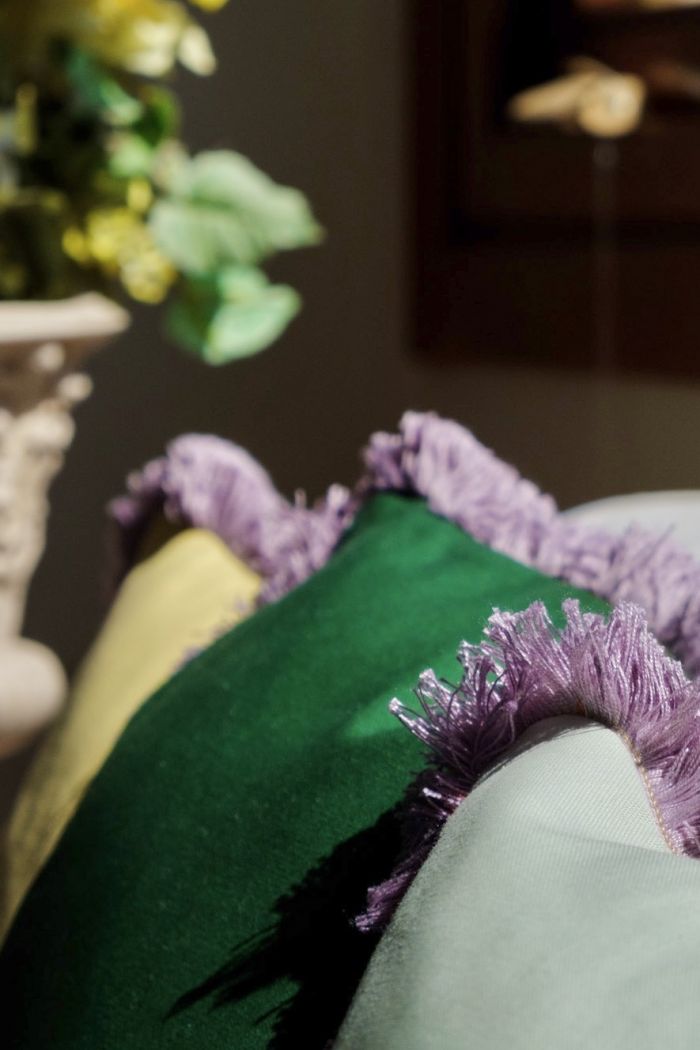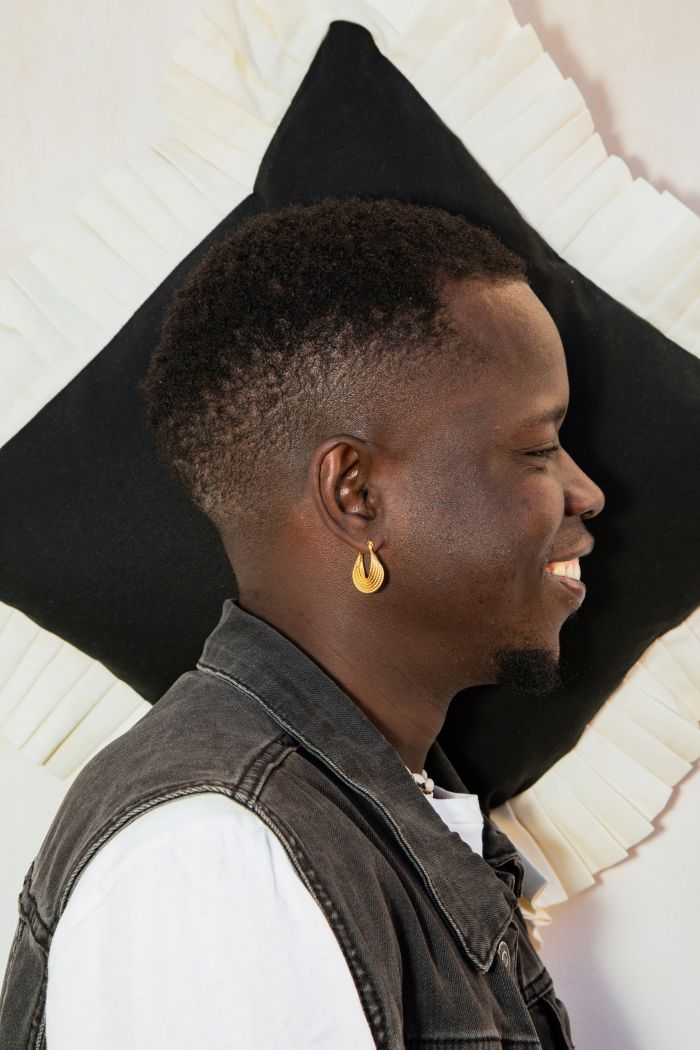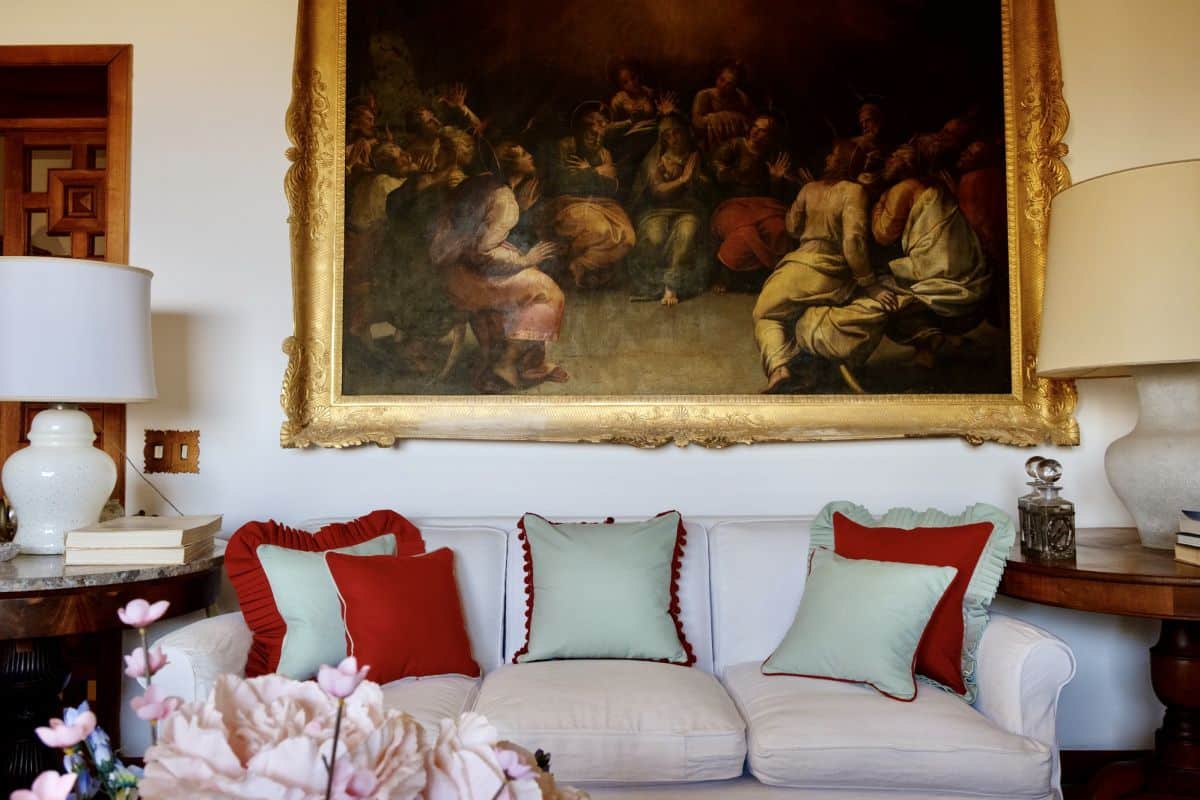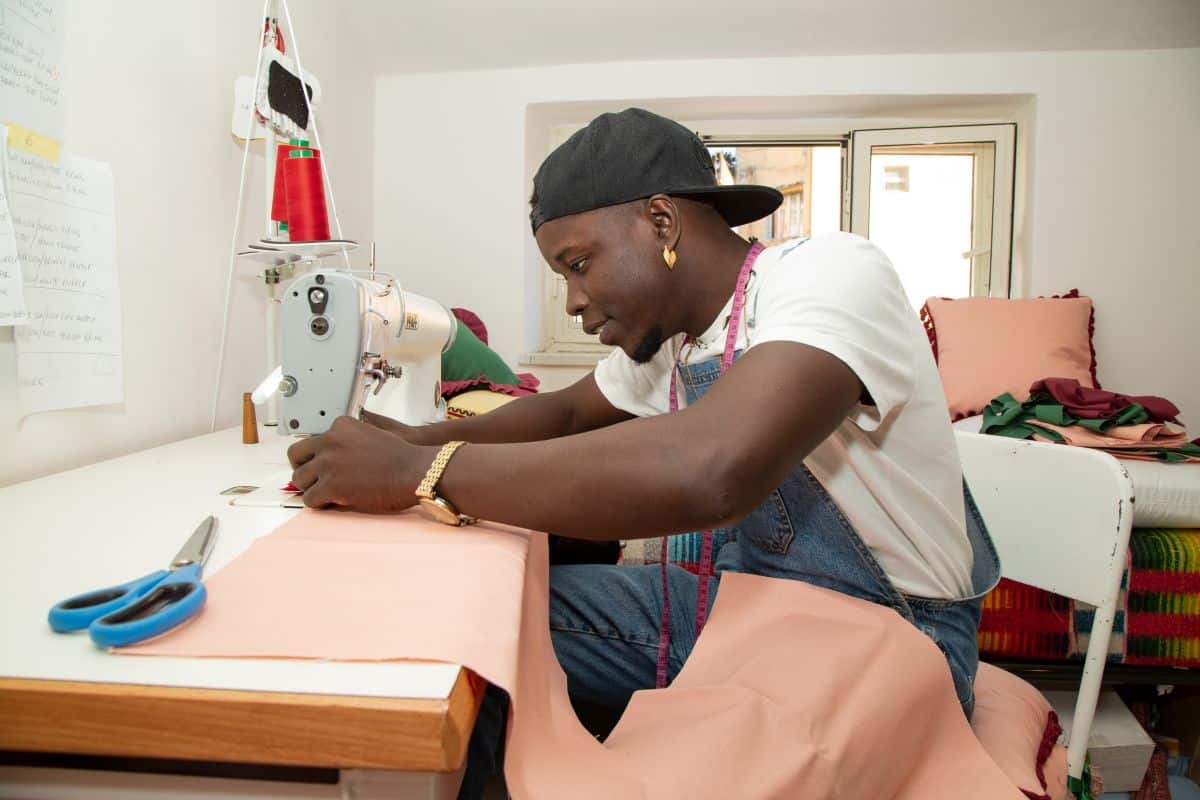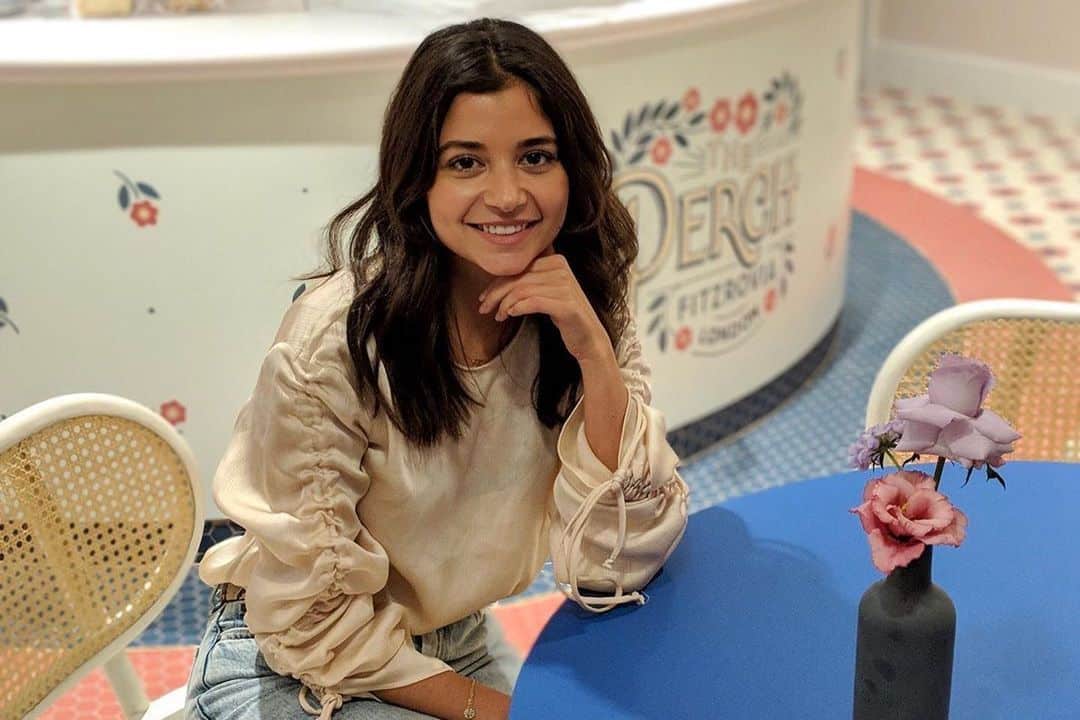Industry expertise
Paboy Bojang
Back in Spring 2020, as the world was collectively getting to grips with the realisation that we were in the midst of a pandemic, 28-year old craftsman and designer Paboy Bojang began sewing cushion covers to pass the time. He had recently lost his job at one of Naples’ historic Majolica tile workshops and was staying with a friend who happened to have a neglected Singer machine and some fabric scraps. A year later, his homeware social enterprise In Casa By Paboy is recognised worldwide and has been featured in international media titles including Vogue and House & Garden. In this conversation, contributor Eva Ramirez discusses his introduction to textiles, the inspiration behind his optimistic, vibrant designs and what sparks joy in his life.



